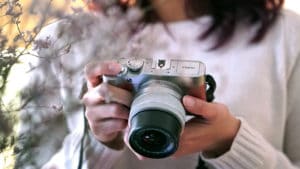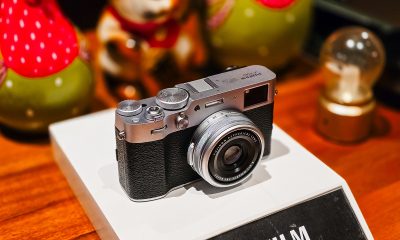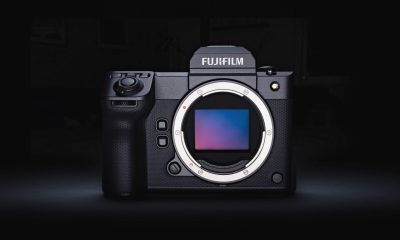

Cameras
Fujifilm X-A5 review: The perfect camera to up your social media game
Yep, I did an #OOTD challenge
When the Fujifilm X-A5 was announced, I was beyond excited.
You see, I own and shoot with a pink X-A3 for my stuff outside of work and my personal vlogging.
And sure, the fact that it was a pretty bright pink was part of what convinced me to get the X-A3, but it’s not just the color that drew me to this shooter. I wanted a small camera that I could bring on trips without being too bulky, something my frail arms could actually hold up for times I do decide to vlog. My non-negotiable was that “flippity screen” (yes, folks, I made that term up), the camera screen that flips upwards so you can see yourself as you shoot or record.
So, when the XA-5 came out, I was curious to see what improvements this new mirrorless camera had.
Quick specs
If you’ve already noticed by now, this will not be your typical camera review. For the benefit of those looking for camera specs, I’ll list them here, but know that this would probably be the last I mention them in this whole piece. This review will revolve around my experience with the X-A5 in the context of my needs when it comes to cameras.
The Fujifilm X-A5 is a mirrorless camera — this means it’s lighter and more compact than DSLRs. It’s equipped with a 24.2-megapixel APS-C image sensor and is capable of reaching ISO 12800 (which may mean good things for low-light shots). It’s also the first X series camera with phase detection which means that this device will focus twice as fast as previous cameras, like my X-A3. The body comes bundled with an XC 15-45mm f/3.5-5.6 kit lens and it has a built-in internal flash.
Now that we got that out of the way, let’s move on.
Looks matter
In true Fujifilm fashion, this camera looks like a pretty Instagrammable itself. The body has clean matte aluminum-silver details that extend to the buttons and the back. The body itself is textured and comes in black, brown, or pink. Of course, I pushed for the pink one.
Button placements are about the same: On/Off toggle with the shutter button, mode dial, exposure compensation dial, and a function key up top, and the usual buttons like menu, video record, playback, and other shortcuts are on the back of the camera. The display is also a touchscreen for easier navigation. Basically, if you’ve used an X series Fujifilm camera before, you’ll know where everything is. 
This camera, dubbed Fujifilm’s smallest mirrorless camera, is light and it fits my hands perfectly. Although, I’d have to admit: There isn’t much of a size difference between the X-A5 and my trusty X-A3, save for the X-A3’s bigger kit lens.
The thing is, there’s no way I’m lugging around a big camera on vacation trips and the X-A5 (as well as my old X-A3) is a size that I find acceptable — it’s not as bulky and it’s small enough to fit in my bag with everything else I decide to bring around on trips.
Pointing and shooting
Fujifilm is a beloved brand in photography and it comes as no surprise that this camera can capture stunning pictures. I mean look at these sample shots…
Although I know my camera basics, I am not the best in shooting or handling cameras, mine or otherwise. The X-A5 was amazingly easy to use, especially since I’m already familiar with the past model. Honestly, I’ve had my share of crappy photos but these samples actually impressed me. Low-light photos, however, are a different story. Like many devices on the market now, you don’t exactly get the best photos when lighting conditions aren’t ideal.
The X-A3, my previous camera, only had Wi-Fi connectivity which means that it could only transfer photos when my phone is connected to the camera’s Wi-Fi. This process was a little cumbersome as that connection gets cut when you switch back to an actual network to get on the internet. That is now a problem of the past. The XA-5 is equipped with Bluetooth connectivity so that mean transferring photos from camera to your phone is so easy — you can even do it automatically and while connected to the internet through Wi-Fi.
Also, tourist selfies can go from this:
To this:
Yep, connecting the camera to the app allows you to take photos and videos remotely. This means you don’t need another person to take your photos; you can control everything with your phone.
#OOTD Challenge!
Now, I generally suck at #OOTDs and posed travel content in general but I felt it was time for a challenge. I’d seen a lot of Instagram influencers tout their Fujifilm cameras so I wondered: Could I take the same photos with this thing?
Since I was traveling with the boyfriend when I was testing out this camera, I enlisted his help and had him be my token Instagram Boyfriend — ah the things we do for work!
I stood at random picturesque spots in Hong Kong and did the best travel/wanderlust/OOTD poses I could muster (which always translated to me looking up, for some reason). Since I’m not so big on editing, I only used the VSCO app on my phone to slightly adjust these photos and add a filter. Again, transferring photos to my phone for editing (and eventual posting) was a breeze because of connectivity functions. The results are as follows:
Needless to say, I was pretty happy with the pics, despite my awkward and repetitive posing. Expect these shots to be on my Instagram feed soon.
Videos and vlogging
One of the big things I use my camera for is vlogging. The fact that this thing is light is a big plus for me because it’s the weight my frail arm can handle as I hold out the camera to shoot myself. I mean, I have no idea how people actually shoot video with those humongous vlogging rigs, but that’s not a problem with the X-A5.
Although I’ve shot vlogs with this camera, my main gripe with this thing is that there’s no movie mode on it. This makes it a little hard to preview settings on the screen for shooting video — a problem I’ve grappled with on my X-A3 as well. The camera is capable of recording in 4K, which is literally bigger videos, but the camera display lags too much on that setting so I’d suggest sticking to a lower resolution like 1080p.
What’s great though is that there’s a touch-to-focus feature on video now, something only previously found on the photo mode. The X-A5 is also equipped with an audio port so you can now improve your vlog audio with an external mic.
Is the Fujifilm X-A5 your GadgetMatch?
Obviously, there are bigger, badder, and more expensive cameras out there that do a whole lot that this dainty thing can’t. But, that’s not the point (and those cameras are probably not pink). This shooter is designed for a certain demographic: those, like me, who want a simple, easy-to-use device in a light, compact, and stylish body. It’s not the best camera out there and at its price point, that would be pretty impossible. Nonetheless, it’s a camera that I really enjoy using.
If you’re like me and you’re looking for a more compact camera for IG photos and social media posts with great phone and app integration, you should consider the X-A5. It’s a great camera for beginners and enthusiasts who are just wetting their toes in the pool of content creation.
The Fujifilm retails for US$ 599 in the US and PhP 34,990 in the Philippines.
SEE ALSO: Fujifilm X-A5 is brand’s smallest and lightest mirrorless camera

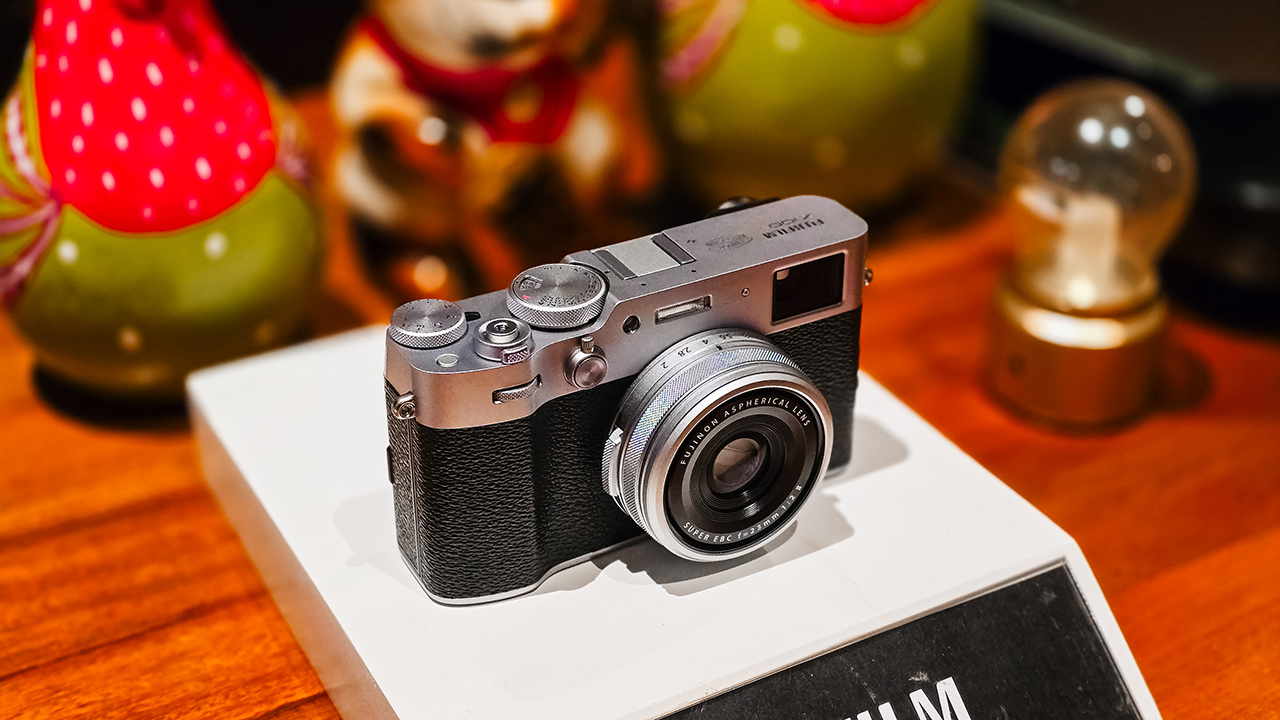
The highly-anticipated Fujifilm X100VI will make its Philippine debut at the FUJIKINA MNL 2024 Camera Fest in Bonifacio High Street, Taguig City. The event is free and open to the public and will be held from April 27 to 28. To register, click this link: FUJIKINA MNL
Celebrity Khalil Ramos will grace the local launch of the Fujifilm X100VI on the second day. Announced a few months ago, the X100VI uses a new 40.2MP X-Trans CMOS 5 HR sensor and is powered by an X-Processor 5 engine. These work together to allow more light absorption. The brand’s latest X100 series offering also features in-body image stabilization for the first time in the series. Moreover, the camera can film up to 6.2K at 30fps.
ALSO READ: Fujifilm announces X100VI, limited-edition model
Aside from the X100VI’s release, FUJIKINA 2024 also allows visitors to engage in various activities. First, there’s the Photo Walk event that lets enthusiasts explore Bonifacio High Street at night and capture its vibrant atmosphere. Participants may event get the chance to win a Fujifilm X-T30 II with their best shots.
Next, Fujifilm’s X-Series and GFX cameras will also be on display, free for passersby to test and feel. There are also three shooting studios for guests to capture memories: the Selfie & Pet, Travel, and Smile studios. And for regular Fujifilm camera users, the event will also offer free servicing.
Furthermore, there are two major photo exhibits throughout High Street, showcasing the best images from the Fujifilm community. Lastly, Fujifilm users may also pre-register for an exclusive XPPH Night here.
You may check the full schedule below.
April 27 – Amphitheater
10:00 a.m. onwards:
- Touch and Try
- Express Service
- XPPH Print Market
4:00 p.m. to 6:00 p.m.:
- Opening program
- Workshops
7:00 p.m. onwards:
- Photo Walk
- Contest
April 28 – Amphitheater
10:00 a.m. onwards:
- Touch and Try
- Express Service
- XPPH Print Market
4:00 p.m. to 6:00 p.m.:
- X100VI launch
7:00 p.m. onwards:
- XPPH Night
April 27 and 28 – C1 Park
10:00 a.m. onwards:
- Fujifilm Interactive Studios (Portrait & Pet, Wanderlust, Project Smile)
- Film Simulation Exhibit
April 27 and 28 – South Street
10:00 a.m. onwards:
- Nationwide Photo and Video Walk 2023 Exhibit
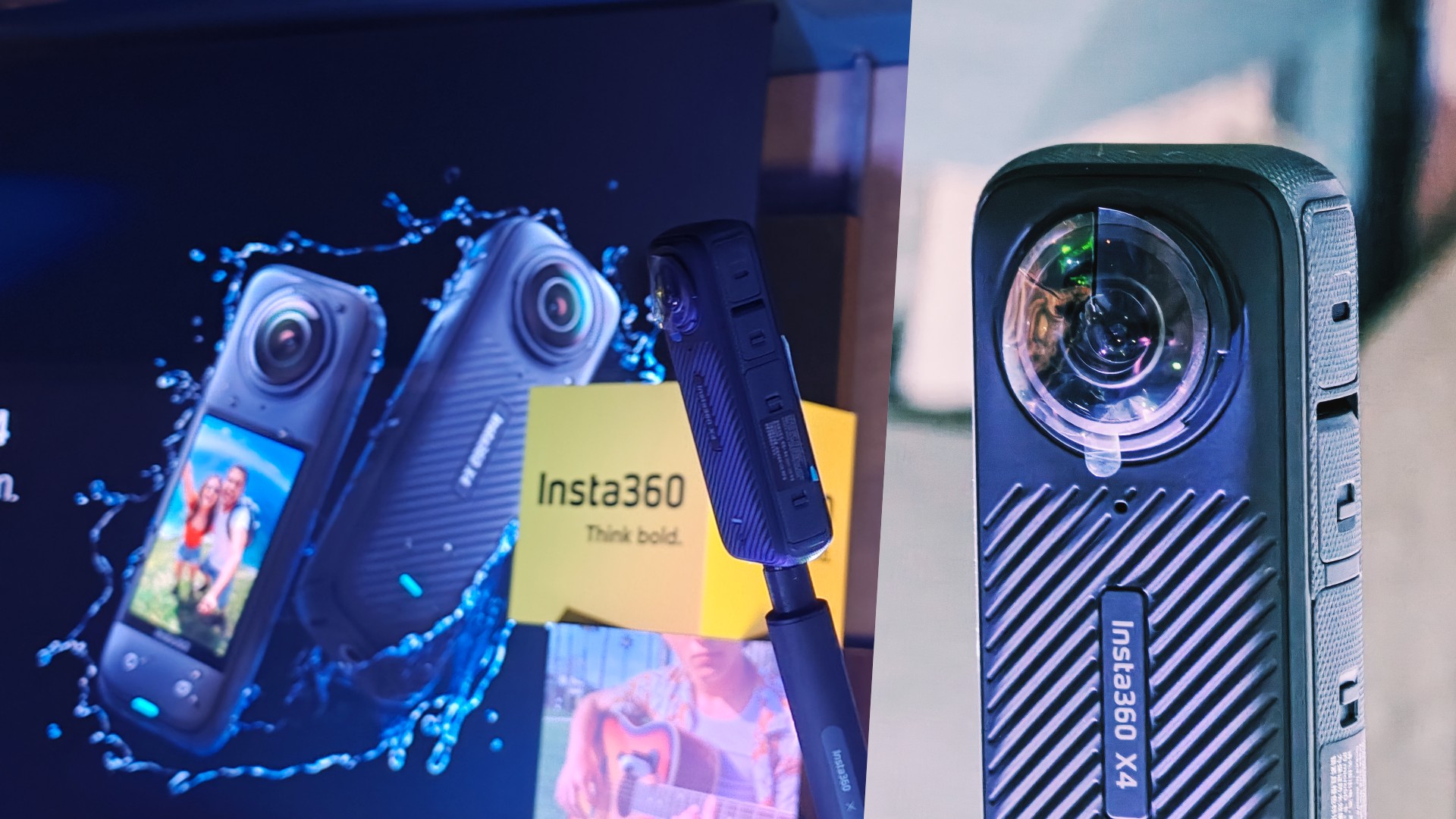
Insta360 is redefining what action cameras are capable of with the introduction of the Insta360 X4. Insta360’s latest offering allows users to film 8K resolution 360-degree videos. In addition, it can record slow-motion 4K videos at up to 120fps.
As expected, the X4 retains Insta360’s “shoot first, point later” ability and invisible selfie stick effect. Moreover, it doubles as a traditional action camera with “flat” captures in Single-Lens mode at up to 4K at 60fps.
The Insta360 X4 is available for US$ 499.99/ PhP 30,990 on the official Insta360 store, Amazon, and other retailers.
Incredible third-person views at 8K
The 8K at 30fps resolution is the highest setting for a 360-degree action camera yet. With such high resolution, users can expect detailed and sharp videos even after reframing, or choosing which specific angle to include in the capture.
For slow-motion, users can now film 4K videos at 100fps for cinematic shots slowed down four times. Furthermore, the highest resolution for a 60fps 360-degree video is upgraded to 5.7K. You may also use the X4 to take stills, as it is capable of 72MP 360-degree photos.
Two cameras in one
Aside from its default 360-degree capturing mode, users may utilize the Insta360 X4 as a regular wide-angle camera. They may shoot a first-person POV video with Single-Lens mode from a chest-mounted position. “Regular” means not having the fish eye-looking effect from the 360-degree mode and having ordinary, flat-looking images instead.
Under the Single-Lens mode, users will be able to record 4K videos at 60fps with an ultra-wide 170-degree field of view. This can be upgraded even more with MaxView while retaining 4K resolution at 30fps. Meanwhile, Me Mode, which erases the selfie stick, can film 4K at up to 120fps.
There are also upgrades on the X4’s creative shooting modes. Bullet Time can now shoot slow-mos at 5.7K at 120fps, or even 3K at an astounding 240fps. Hyperlapse videos, meanwhile, can be recorded in 8K quality.
Action specialist
A 5nm AI chip powers the Insta360 X4, along with a smart control system with Voice and Gesture Control features, and a host of AI-powered shooting and editing features.
The action camera comes with a 2.5-inch Corning Gorila Glass touchscreen for on-the-go use. Users may adjust the settings or choose the desired mode more easily.
The X4’s 2,290mAh battery allows for up to a 135-minute run time (at 5.7K@30fps). This is an impressive 67% longer battery life than its predecessor, the X3.
Moreover, the device is waterproof at up to 164 feet for diving, and cold-weather resistant at up to -20 degrees Celsius.
AI-powered editing
The X4 also harnesses the power of AI. Using the Insta360 app, users may simply move their phone or use the virtual joystick to point the camera. AI Edit, on the other hand, lets Insta360’s entire algorithm do the work for the reframing process. This improved algorithm has better subject detection, helping users save time. Users may also get creative with Shot Lab and Motion ND filters.
Cameras
Fujifilm announces X100VI, limited-edition model
The first X100 camera with in-body image stabilization
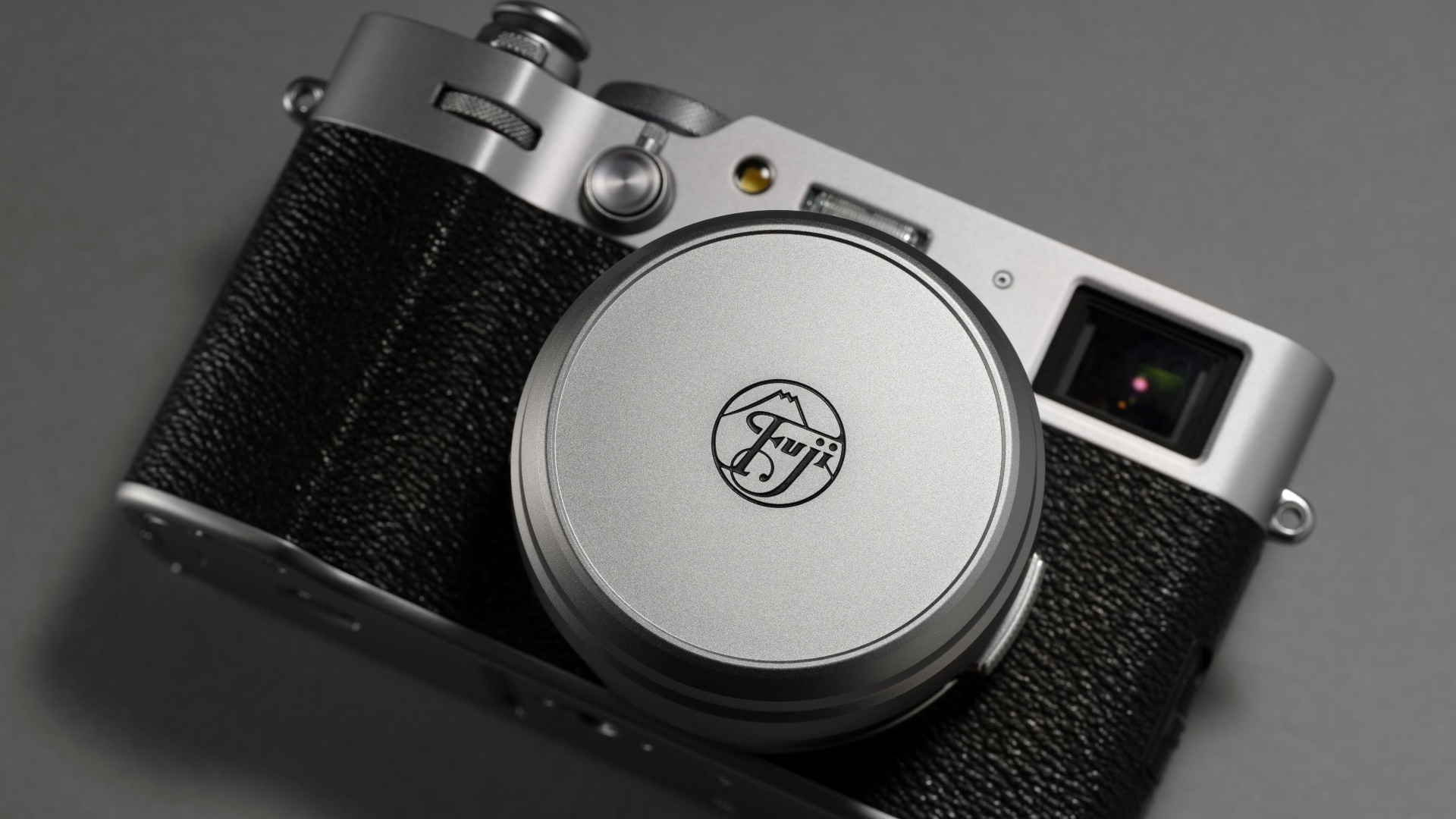
Fujifilm has launched its latest compact digital camera: The Fujifilm X100VI. The sixth generation model introduces a handful of firsts for an X100 series camera.
The X100VI boasts of a new 40.2MP X-Trans CMOS 5 HR sensor and is powered by an X-Processor 5 engine. These work together to allow more light than any prior X100 camera.
For the first time, the camera offers in-body image stabilization with up to 6.0 stops. Filming at up to 6.2K 30p has also been made possible.
High performance
In addition to more light absorption, the X100VI features ISO 125, which was only available as an extension in previous models. Its tracking AF function also ensures high-quality content especially for filming.
The camera comes with 20 film simulation modes, including the new “REALA ACE” mode for a diverse range of distinctive tones. This particular mode offers faithful color reproduction and high-contrast tonality which is suitable for various subjects and situations.
Moreover, the X100VI supports Frame.io Camera to Cloud without the need for additional accessories. Users will only need to wirelessly connect to the internet to automatically upload photos and videos. This speeds up the process from shooting to final editing.
Better operability
The X100VI also has an “Advanced Hybrid Viewfinder” function. With this, users will be able to switch between the optical (OVF) and electronic (EVF) viewfinders. The EVF itself is equipped with a high-resolution OLED panel with about 3.69 million dots.
Meanwhile, the “Electronic Range Finder” (ERF) allows a small EVF to be simultaneously displayed on the OVF. This permits the photographer to capture the subject in the OVF while magnifying the in-focus area in the small EVF.
Functional design
The Fujifilm X100VI retains the compact and lightweight look of its previous iterations. As with its predecessors, the latest model’s body uses aluminum for the top and bottom surfaces.
It has also adopted the X100V’s ultra-thin tilt LCD monitor design. The shape of the grip, on the other hand, has been fine-tuned to ensure a better feel. The positions of the buttons on the back have also been moved.
Limited edition X100VI
In addition to its release, a limited edition X100VI model will be made available to celebrate Fujifilm’s 90th anniversary. Only 1,934 units of the limited edition model will be available worldwide.
These numbered X100VI units are packaged in a special box that includes a special strap, soft release button, and history cards.
The camera body is engraved with the founding logo in 1934, along with a unique serial number.
In the Philippines, The Limited edition X100VI will retail for PhP 130,990. Meanwhile, the standard edition is priced at PhP 103,990.
-

 Events2 weeks ago
Events2 weeks agoStellar Blade: PlayStation taps cosplayers to play Eve for game’s launch
-

 Features1 week ago
Features1 week agoFortify your home office or business setup with these devices
-

 Accessories2 weeks ago
Accessories2 weeks agoLogitech unveils G Pro X 60 gaming keyboard: Price, details
-

 Reviews1 week ago
Reviews1 week agorealme 12+ 5G review: One month later
-

 Deals2 weeks ago
Deals2 weeks agoTCL P635 TV: Big savings for TCL’s anniversary
-

 Gaming1 week ago
Gaming1 week agoNew PUMA collection lets you wear PlayStation’s iconic symbols
-

 Accessories1 week ago
Accessories1 week agoMarshall Major V: Reasons Why I Love It
-

 Gaming1 week ago
Gaming1 week agoMore PlayStation 5 Pro specs have been leaked













